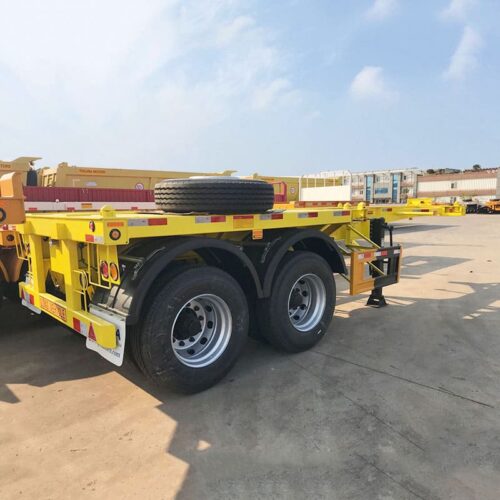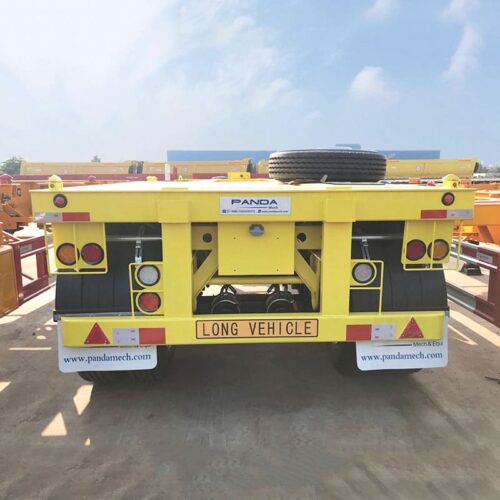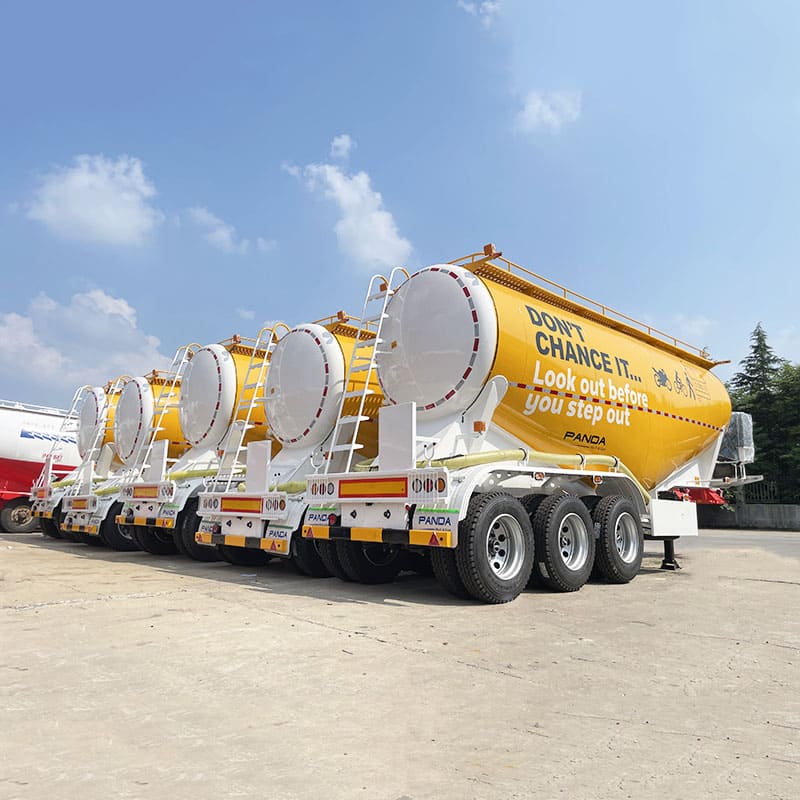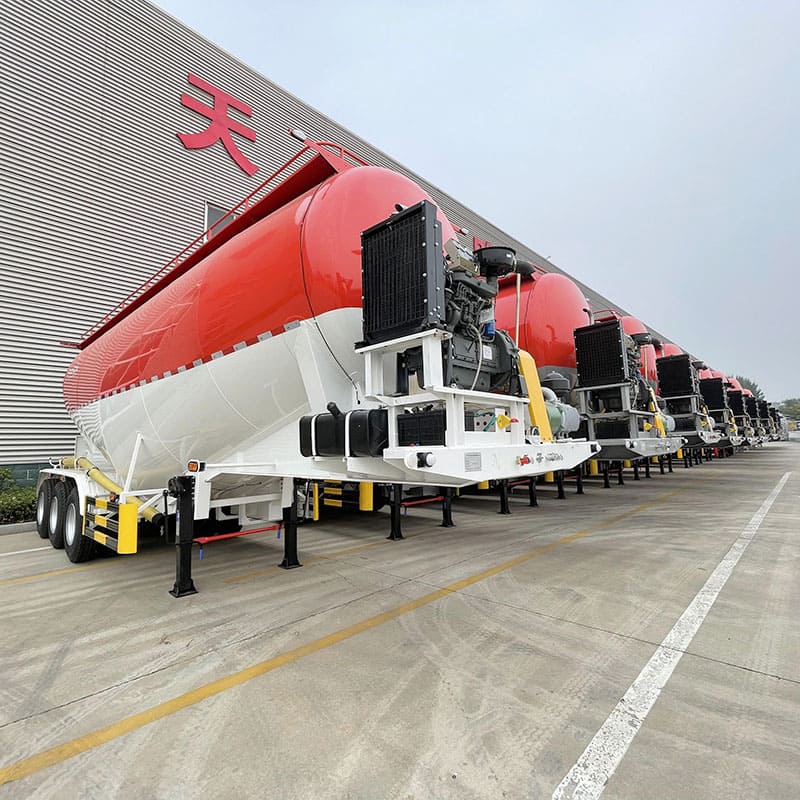Transporting goods via shipping containers can be challenging due to their diverse sizes. Certain containers are so large that they require unique towing vehicles and trailers. Container chassis trailers offer a solution, designed to accommodate a variety of container types and sizes.
The design of these trailers isn’t just about size. It’s also shaped by laws and regulations governing the transportation industry. These rules specify the distance between the front and rear wheels on all heavy-duty vehicles, a requirement that must be followed in any trailer design and production.
Container chassis trailers aren’t one-size-fits-all. They’re available in multiple types, including both sturdy models for heavy loads and lighter ones for less demanding applications.
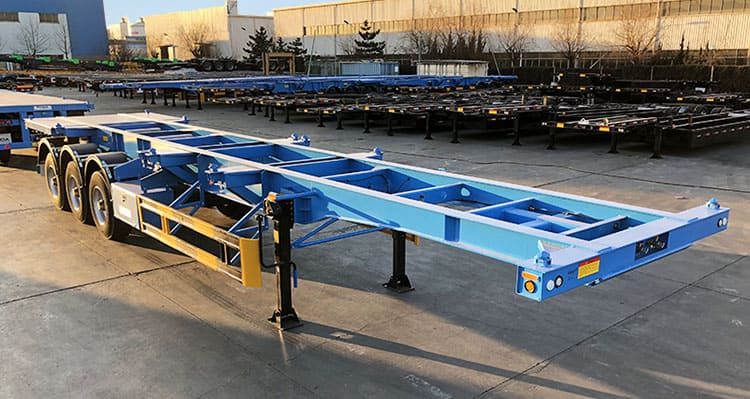
1. Key Features of Container Chassis Trailers
Container chassis trailers vary in shape and size. Each has unique components and systems to fit different needs. Here are the main features and specs you should know:
Size: These trailers are designed in various sizes to fit different container dimensions, 10, 20ft, 40ft and 45ft, allowing you to carry more cargo if your local laws permit. The choice of trailer depends on your needs and local regulations.
Load Capacity: Our trailers can handle loads ranging from 20 to 60 tons. For transporting heavy items, the 40-ton capacity might be suitable. However, for most containers, a 20-ton capacity trailer would suffice. This aspect is crucial when selecting a container chassis trailer.
Axles: Usually, the 3 axle 40ft container chassis is the most commonly used one, which can be used to transport 10ft, 20ft and 40ft containers
Tires: Tires are divided into single tires and twin tires, and most container chassis are twin tires. Common tire models are 12R22.5, 385/65R22.5, 13R22.5, 12.00R24, 315/80R22.5.
Design: The container chassis trailer, built for its intended use, is made from high-strength materials like Grade50 [345] and Grade80 [550] steel. Its solid structure is crafted using top-notch welding techniques to assure high quality.
1.1 Specifications
| Dimension | 12500*2500*1550mm |
| Weight | 6500Kg |
| Main Beam | “I” Section 500mm height Q345/T700 material |
| Twist-Lock | 4/8 set ISO Standard |
| Suspension | Mechanical / Air |
| Axle | 3 axles, BPW/FUWA brand |
| Rim | 8/12 pieces 9.0-22.5 |
| Tire | 8/12 pieces 12R22.5 Bridgestone/Triangle/Linglong etc |
| Brake Valve | WABCO |
| Kingpin | 2″(50mm)/3.5″(90mm) JOST Bolting Type |
2. Various Models of Container Chassis Trailers
Container chassis trailers come in diverse designs, tailored to their specific applications. Each is suited to particular transportation methods and environments.
This information guides you in determining the best trailer type for your needs. Some scenarios might call for stacking containers together, while in others, individual containers are transported on the road.
These containers can also be transported by rail, so the trailer’s design and materials should be compatible with other transportation methods.
Local regulations also shape the trailer’s structure. For example, some countries have maximum container height requirements, regardless of whether containers are stacked or transported individually.
Here are the different models that you will find in the industry today:
2.1 Standard chassis Trailer
The standard chassis trailer is a straightforward fixed structure designed for moving containers from one place to another. Made of steel, it’s loaded and unloaded with overhead cranes or forklift truck. It can transport containers of various lengths, like 20ft, 40ft, or 45ft, and features marked positions indicating where to load your container. This makes it simple to secure and safely transport the container. And the loading and unloading speed is also very fast, improving the work efficiency.
Or if you need to unload the container’s cargo directly to a fixed location, just open the container door and life one end of the container.
2.2 Tilt Container Chassis
An installed hydraulic system on the upper platform facilitates unloading by tilting the container upwards. Tilting container chassis costs a bit more than a standard container chassis, but it offers a highly convenient and safe method for container transportation. Loading and unloading through hydraulic cylinder lifting and landing is faster and safer.
2.3 Extendable Container Chassis
The extendable container chassis is adaptable, accommodating different sizes of containers. Similar to the load positioning chassis, it can extend at the back to fit larger containers. It’s an ideal choice for transporting various container lengths.
Equipped with built-in adjustment mechanisms, this chassis type can easily create platforms of different sizes for various containers. However, when adjusting, it’s essential to ensure the chassis length exceeds the container or load size, the extendable container chassis provides a unique solution for handling various load sizes.
3. Maintenance Your Chassis
Keeping your container chassis in top shape is a must for safe and effective use. It’s necessary to regularly check key parts like brakes, lights, tires, and the overall structure of the chassis. Particular attention should be paid to the chassis frame, watching out for any signs of rust or corrosion which could reduce safety and durability.
Check your tires regularly to make sure they are free of bumps, stones, and other problems.
Issues with the locking mechanisms, which secure the containers, should be fixed immediately to avoid mishaps during transport.
Regular maintenance not only boosts safety but can also lengthen the lifespan of your chassis, making it a smart long-term investment.
4. The Future of Chassis
In the pursuit of better safety, efficiency, and sustainability, the container chassis industry has seen many exciting developments. Some of these innovations include “smart” chassis equipped with sensors and trackers, providing live updates on the condition, location, and weight of loads, aiding fleet managers to optimize operations.
There are also new designs featuring lightweight yet strong materials, which cut down the chassis’ weight without sacrificing durability. This results in increased cargo loads.
5. Lease or Buy?
Choosing to lease or buy a container chassis depends on the specific needs and financial standing of a business.
Rental container chassis suitable for short-term projects. Leasing is a flexible option that lets businesses easily adapt to changing cargo demands without a large initial investment, making it ideal for businesses with fluctuating demand or those new to the industry.
Ownership, on the other hand, allows for total control over the use and maintenance of the chassis. This could lead to long-term cost savings for businesses with high and consistent container traffic. But, owning shipping container chassis also means taking on responsibilities like maintenance, storage, and adhering to safety standards.
Conclusion
They have different configurations, different sizes, different capacities, and can adapt to a variety of different sizes of container transportation. At the same time, container chassis is divided into three types, standard shipping container chassis, tilt chassis trailer and extendable container chassis. We can choose different types according to our needs, or contact Panda Mech to help you choose. The maintenance of container chassis is also very important, which can improve the life of container chassis.










